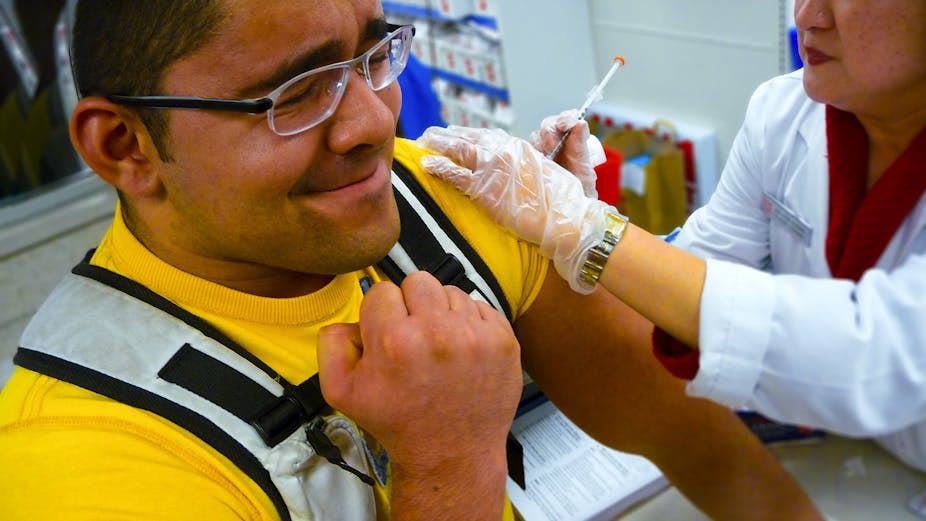The 2009 influenza pandemic prompted the fastest effort in history to develop a vaccine. Within six months of the pandemic declaration, vaccine-makers had developed, produced and distributed hundreds of millions of doses. Unfortunately for some of the flu’s victims, even that response was not fast enough.
Now researchers in the US have created a vital part of a flu jab using a process that takes less than five days. As reported in the journal Science Translational Medicine, the team led by Philip Dormitzer of drug company Novartis has shown that their method is superior to traditional vaccine efforts in both speed and quality. Their hope is that it will make regulators rethink current practice, which does not allow the use of their technology.
Approved methods for making vaccines involve collecting flu virus from patients and, if it’s different enough from previous strains, sending it to vaccine-makers. Once researchers complete the necessary genetic manipulation, a version of the virus is injected into chicken egg cells and allowed to replicate. After safety tests, this version of the virus becomes the vaccine that gets distributed.
These methods are regulated by the World Health Organisation, and have been used for many decades without much change, Sarah Gilbert, professor of vaccinology at University of Oxford said.
Instead, Dormitzer and his colleagues wanted to use a technique that has become much faster: gathering genetic data on site, for example, where the flu breakout occurred in China, and manufacturing a synthetic version of the virus in a lab, for example in the US. They also wanted to replicate the modified version of the virus in cells derived from a dog’s kidney, because they allow for faster production of virus “seed stock”, which can be used to manufacture vaccines.
To test whether these ideas stood the test, Dormitzer was provided genetic data of an unknown flu virus by the US Biomedical Advanced Research and Development Authority on a Monday morning. Dormitzer’s team used the data to make DNA that would create a version of the unknown virus mixed with a laboratory strain, which is required to make the vaccine safe. Crucially, the hybrid they made contained information to instruct cells to make proteins (hemagglutinin and neuraminidase), from the unkown virus, that give new strains of flu the ability to evade the human immune system.
This was done by noon on Thursday, in just four days and four hours. The “seed” version was then successfully tested in ferrets, an animal model for flu vaccines. But Wendy Barclay, an influenza virologist at Imperial College London who did not work on the study, has warned, “This time does not account for the vast majority of time delay in rolling the vaccine out from seed virus.”
Nevertheless, the research shows that it is now possible to cut down the time needed to produce a seed virus significantly. Any time saved in responding to a flu pandemic is welcome. “Regulators need to capitalise on such developments,” Gilbert said.

